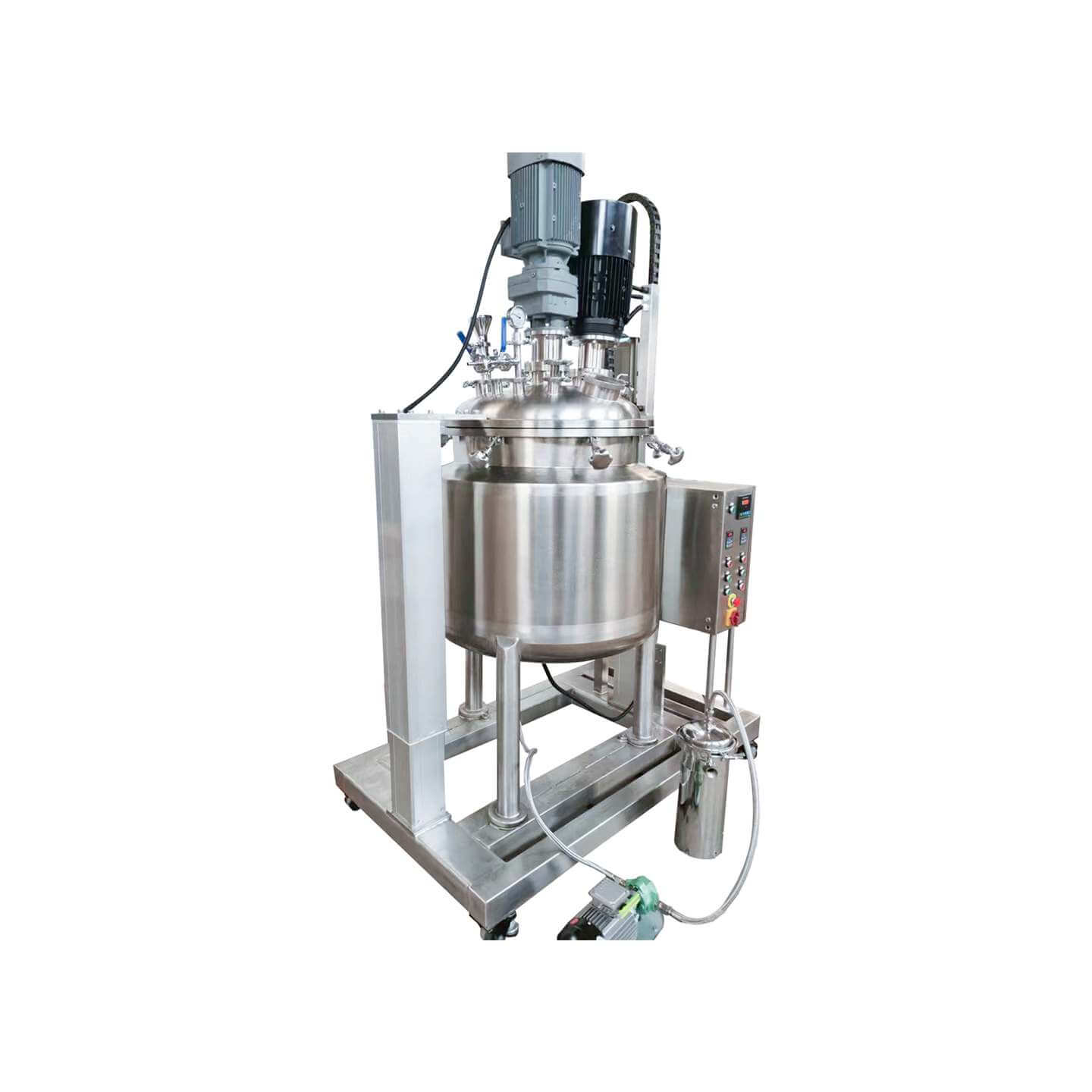

Laboratory Reactor
Laboratory reactor: used in the chemical industry, pesticide, paint, and other fields
Material
glass, stainless steel (316, 304), carbon steel, others
Capacity (L)
10-10000+
Mixing system
anchor, paddle, frame and others
Heating system
electric heating, oil heating and others
The laboratory reactor is small in size, beautiful in appearance, light, and fast in installation. It is composed of a pot body, pot cover, stirrer, jacket, support and transmission device, shaft sealing device, etc. The type of stirring device, rotation speed, sealing structure, heating method, etc. are produced.
Request a quoteThe laboratory reactor is a kind of equipment used for chemical experiments. It consists of a metal container and a heating system. Laboratory reactors are designed so that the reaction temperature and pressure can be controlled within the vessel. It can be used in a variety of different experiments, including synthetic compounds, analytical chemistry, catalytic reactions, and more. It is widely used in scientific research experiments in the fields of new materials, energy, and environmental engineering. It is a common container for scientific research in university teaching, scientific research units, and chemical laboratories.

Structural composition characteristics of laboratory reactor
The seal between the kettle body and the kettle cover adopts a triangular line seal, which has a long service life.
The fastening main seal adopts two open snap rings, which freely lean against the shoulders of the kettle body and the kettle cover, and tighten the eight main tightening bolts with a balanced torque, so that the laboratory reactor can achieve a tight seal. When dismounting, loosen the eight main bolts and open the clasp to lift the lid of the kettle, which is labor-saving and convenient, and is the most ideal structural composition at present.
The kettle lid and the guide column are connected by the lifting arm. Shake the lifting handwheel and move through the lifting screw to make the kettle cover move up, down, left, and right on the guide column. The movement of the lifting arm depends on the friction reduction effect of the ball. The rotation of the kettle cover and the tilting and resetting of the kettle body. First, lift the lid of the laboratory reactor to a certain height through the lifting hand wheel and the lifting screw, then loosen the tightening hand twist on the boom, and press the positioning movable key by hand to rotate the lid. Then loosen the fastening hand twist on the rotating seat, press and hold the turning hook to turn the dumping handwheel, so that the kettle body can ensure a certain discharging angle, and then loosen the turning hook to discharge the material. When the kettle body needs to be reset, shake the dumping handwheel, press and hold the rotating hook, and then it can be quickly reset. In order not to make the kettle body of the laboratory reactor swing left and right, the dumping handwheel must be controlled by hand to reach the reset speed.
The rotary stirring adopts a cylindrical magnetic coupling structure, and the torque is determined by the magnetic material. Generally, it is a strong magnetic rare earth, which has a large coupling force. It is powered by a motor, and the agitator generates sufficient stirring force through the coupling. The slurry is replaceable by the operator, and there are components such as slurry, anchor, frame, auger, and worm gear to choose according to the viscosity of various materials.
The valves of the laboratory reactor are equipped with gas phase valves, liquid phase valves (also called bottom pipe valves), safety blast valves, feed valves, and discharge valves, which can be increased or decreased according to user requirements. The structure of the valve is reciprocating, and its characteristic is that the sealing life of the rotary valve is 1.5 times longer than that of the rotary valve. The bursting valve is equipped with double safety devices and a single safety device. The bursting diaphragm is adjusted by the manufacturer before leaving the factory. It is not allowed to be adjusted or loosened arbitrarily, and the pressure gauge is directly above the indication.
Laboratory reactors play an important role in scientific research, pharmaceutical manufacturing, and chemical processes. It provides a controlled environment that enables researchers to precisely probe the nature of chemical reactions. The use of laboratory reactors can also improve experimental efficiency, reduce manual operation errors, and ensure the reliability of experimental results. The development of laboratory reactors will provide strong support for the development of new materials and new energy in the future.




